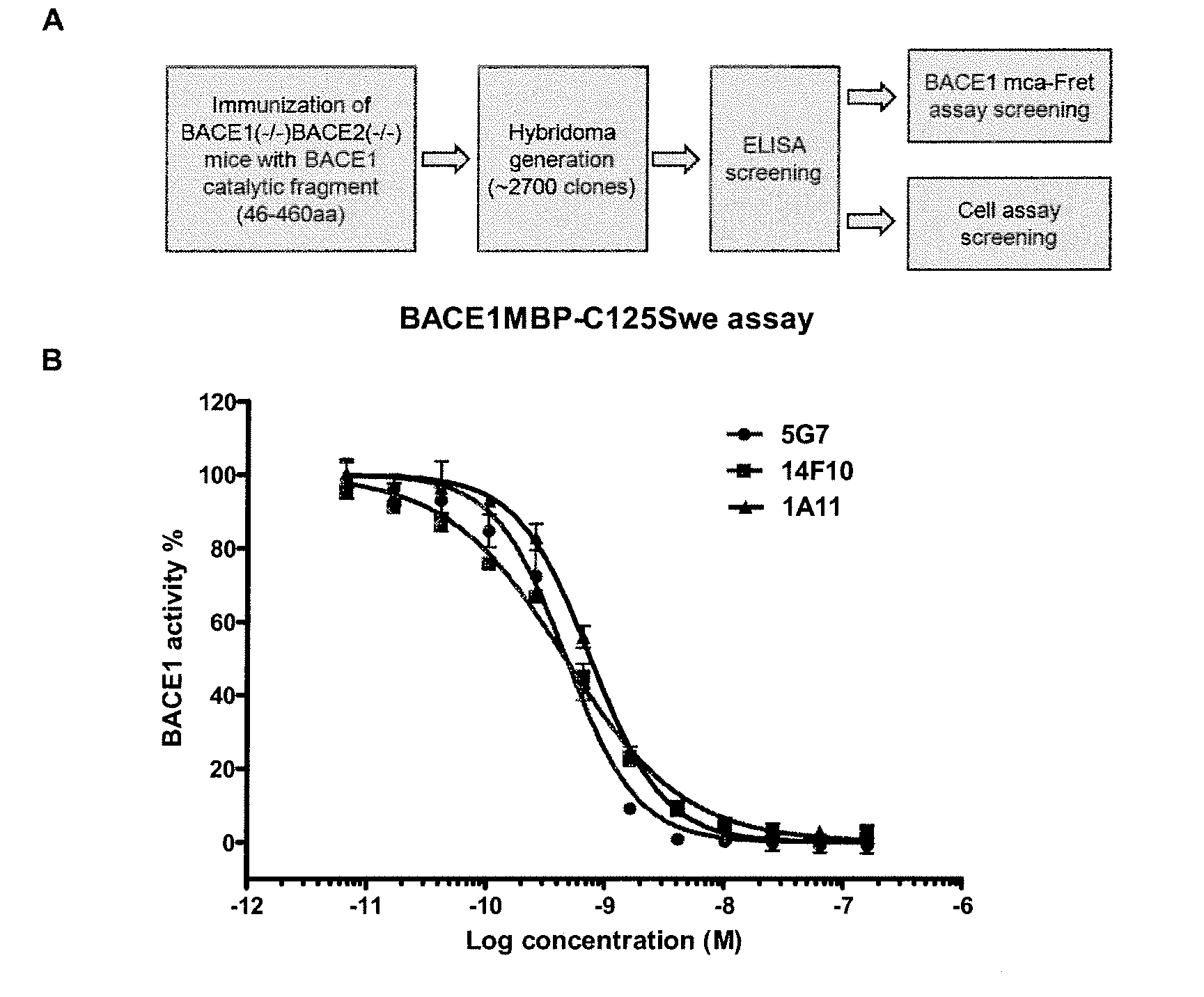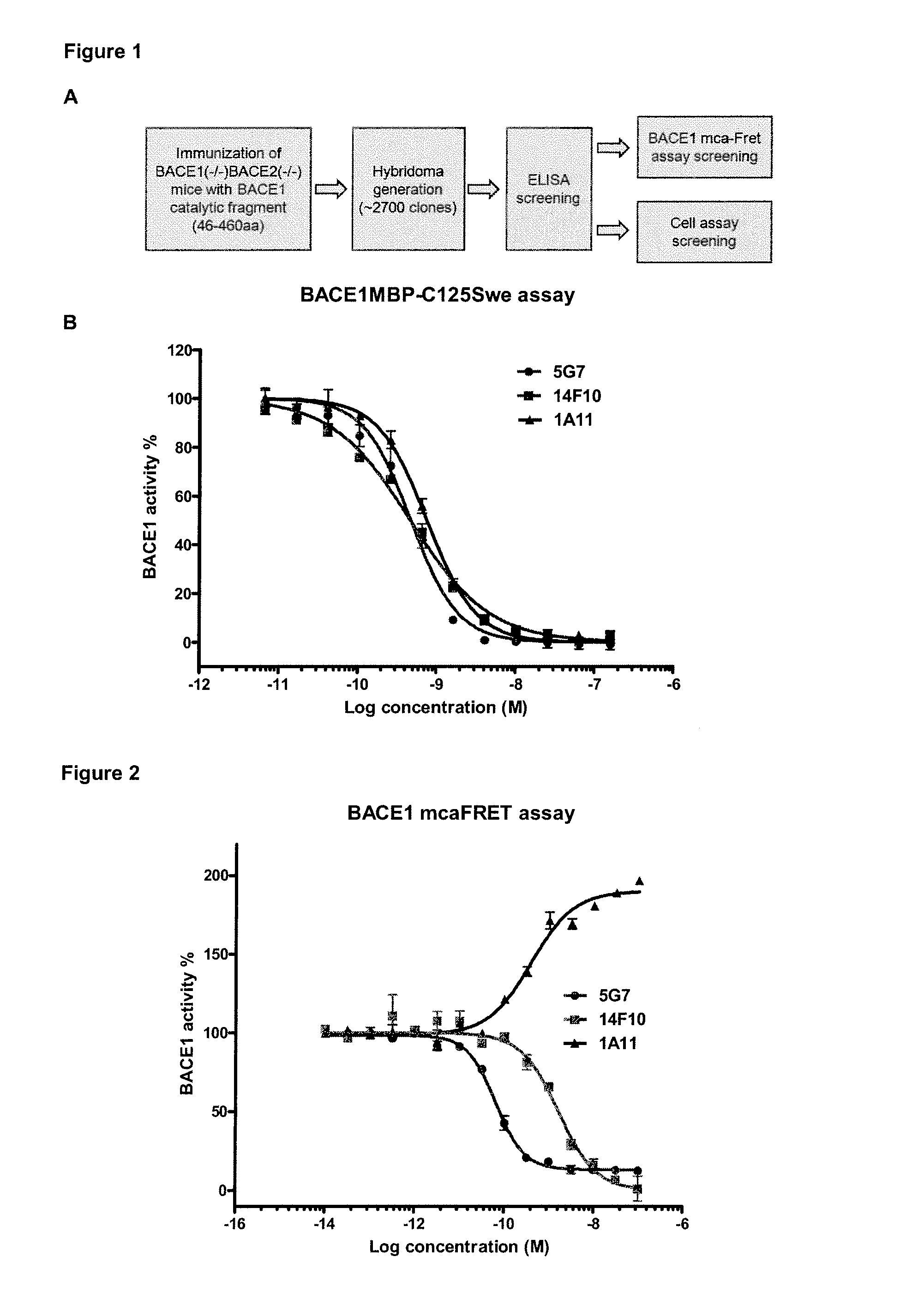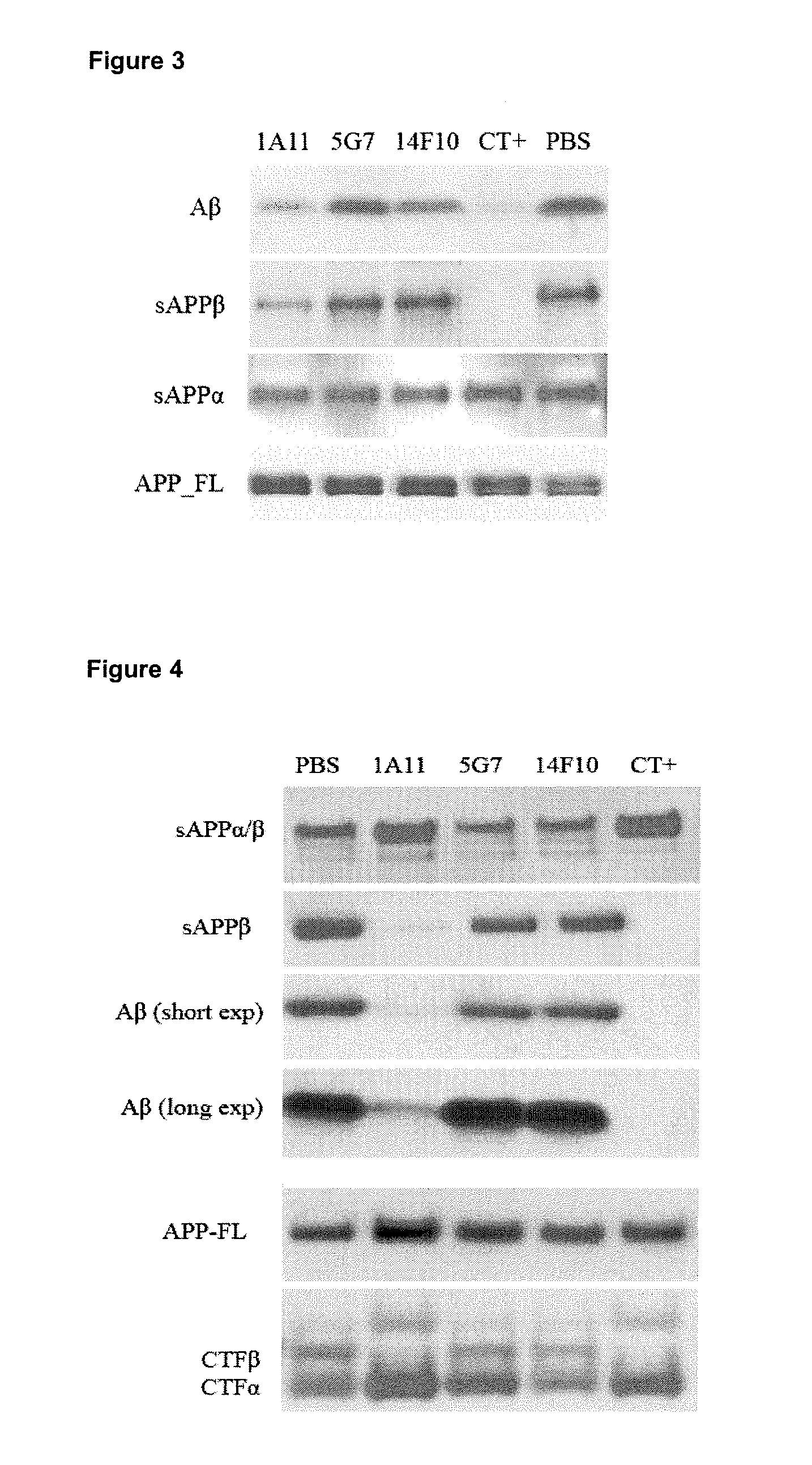Bace1 inhibitory antibodies
a technology of bace1 and inhibitors, applied in the field of biotechnology and antibodies, can solve the problems of serious side effects, memory and cognitive function deterioration, and the development of effective inhibitors of bace1 remains quite challenging
- Summary
- Abstract
- Description
- Claims
- Application Information
AI Technical Summary
Problems solved by technology
Method used
Image
Examples
example 1
Identification of Candidate BACE1 mAb Inhibitors from Hybridoma Screening
[0103]In order to generate anti-BACE1 monoclonal antibodies, hybridomas were produced after a series of immunizations of BACE1− / −BACE2− / − mice with purified human BACE1 ectodomain protein (amino acids 45-460) (SEQ ID NO:13). Hybridoma screening was started about two to three weeks after plating the cells on 96-well plates, when most of the wells were >80% confluent. Functional screenings, including BACE1 FRET assay screening and cell-based assay screening, were applied in early hybridoma screening stage (see FIG. 1, Panel A). Hybridoma supernatants were first screened by ELISA on immobilized BACE ectodomain (Immunogen). 377 out of about 2400 hybridomas scored positive in this assay (ELISA signals of the positive wells were 5 to 30 times above background).
[0104]The positive hybridomas from the ELISA screening were further tested in the BACE1 mca-Fret assay. Supernatants from six wells (2G3, 5G7, 2G6, 10G1, 14F10...
example 2
MAbs 1A11, 5G7 and 14F10 Modulate BACE1 Activity in Enzymatic Assays
[0108]The three candidate BACE1 inhibitors, 1A11, 5G7 and 14F10 were first characterized by MBP-ELISA, which uses as a substrate the C-terminal 125 amino acids sequence of APPswe, which is a large substrate. In this MBP-ELISA assay, all three mAbs can fully inhibit BACE1 activity (FIG. 1, Panel B). The IC50 of 5G7, 14F10 and 1A11 are 0.47 nM, 0.46 nM or 0.76 nM, respectively.
[0109]We also tested the three mAbs in mca-Fret assay (FIG. 2), which uses a small FRET peptide as substrate. In this assay, 5G7 and 14F10 can fully inhibit BACE1 activity with IC50 of 0.06 nM and 1.6 nM (14F10), respectively. Unexpectedly, 1A11, the BACE1 inhibitor retrieved from the cellular assay, stimulated BACE 1 activity.
[0110]The results from the two enzymatic assays suggest that mAb 1A11 is a steric inhibitor for BACE1-large substrate interaction (BACE1-APP).
example 3
MAb 1A11 Inhibits BACE1 in Human Neuroblastoma Cells
[0111]The three candidate mAb inhibitors, 5G7, 14F10 and 1A11 were tested in a cellular assay. SH-SY5Y cells stably expressing wild-type APP were cultured in six-well plates to 90% confluency and incubated with 300 nM mAbs for 24 hours. PBS was used as negative control (mAbs were dissolved in PBS) and the BACE1 inhibitor compound III (Merck Company) diluted to 1 μM in PBS was used as a positive control. After 24 hours treatment, Aβ, sAPPβ and sAPPα from conditioned medium were analyzed by Western blot. As shown in FIG. 3, 1A11mAb inhibited Aβ and sAPPβ generation, while 5G7 and 14F10 treatment had no inhibitory effects on cellular BACE1 activity.
PUM
| Property | Measurement | Unit |
|---|---|---|
| diameters | aaaaa | aaaaa |
| diameters | aaaaa | aaaaa |
| diameters | aaaaa | aaaaa |
Abstract
Description
Claims
Application Information
 Login to View More
Login to View More - R&D
- Intellectual Property
- Life Sciences
- Materials
- Tech Scout
- Unparalleled Data Quality
- Higher Quality Content
- 60% Fewer Hallucinations
Browse by: Latest US Patents, China's latest patents, Technical Efficacy Thesaurus, Application Domain, Technology Topic, Popular Technical Reports.
© 2025 PatSnap. All rights reserved.Legal|Privacy policy|Modern Slavery Act Transparency Statement|Sitemap|About US| Contact US: help@patsnap.com



